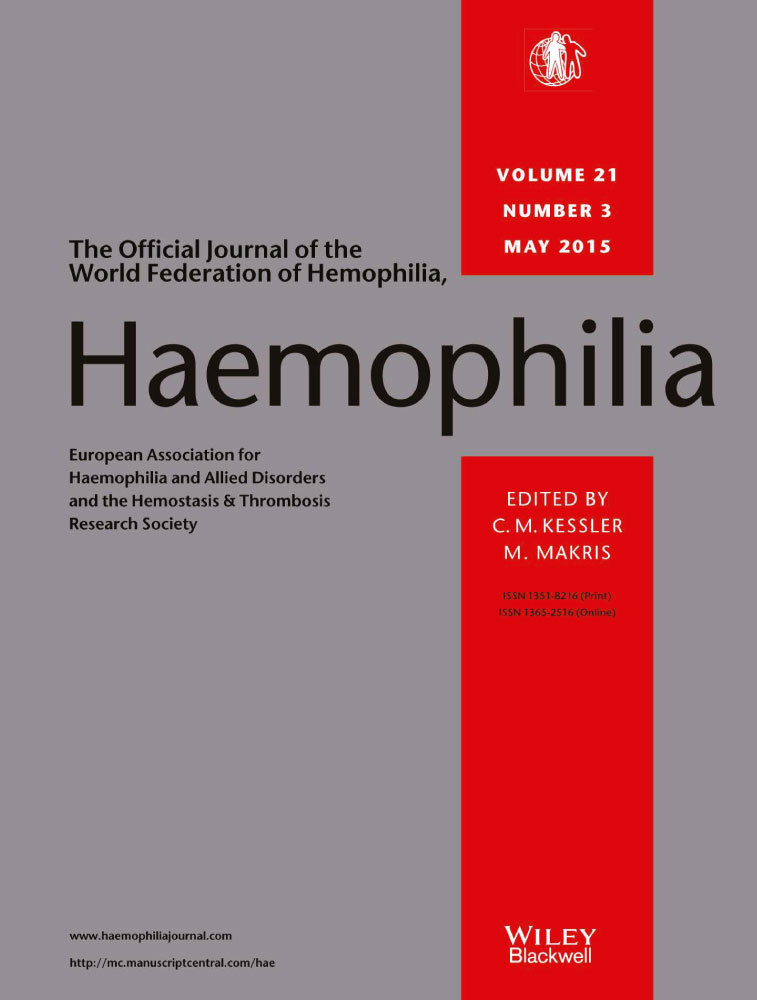Cost analysis of prophylaxis with activated prothrombin complex concentrate vs. on-demand therapy with activated factor VII in severe haemophilia A patients with inhibitors, in Spain
Abstract
Objective:
A cost analysis model was developed to compare annual cost of prophylaxis with activated prothrombin complex concentrate (aPCC) vs. on-demand therapy with activated recombinant factor VII (rFVIIa) in severe haemophilia A patients with inhibitors for the Spanish National Health System (NHS).
Methods:
Model inputs were drug cost for prophylaxis (aPCC) and for on-demand treatment (rFVIIa or aPCC); bleeding episodes management (excluding bypassing agent cost); surgical costs and disease management (excluding bleeding episodes). Annual bleeding episodes treated on-demand was assumed to be 25, whereas breakthrough bleeds on prophylaxis was 8. Dose for prophylaxis was 75.72 U kg−1, three times per week. The total on-demand dose/bleeding episode was 679.66 μg kg−1 (rFVIIa) and 235.28 U kg−1 (aPCC). The average bleeding cost (€2998) considered different bleeding sites (62.5% joints, 28.6% muscles and soft tissues, 3.6% mucocutaneous tissues and 5.4% other areas). A 7.5% deduction was applied to ex-factory drug prices. Unitary costs (€2013) derived from local databases. Sensitivity analyses (SA) were performed.
Results:
Annual cost of aPCC prophylaxis (€524 358) was 16% lower than on-demand treatment with rFVIIa (€627 876). Yearly drug costs were €497 017 for aPCC (€73 166 for on-demand treatment and €423 850 for prophylaxis), and €548 870 for rFVIIa. Disease management cost (€2645 per year) and surgical procedures (€708 per year) were common for both strategies. In the SA prophylactic treatment led to savings between €26 225 and €-1 008 960.
Conclusion:
Prophylaxis with aPCC reduces number of bleeding episodes in severe haemophilia A patients with inhibitors. aPCC prophylaxis resulted in savings in excess of €100 000 per-patient per year, being 16% less costly than on-demand treatment with rFVIIa, for the Spanish NHS.




